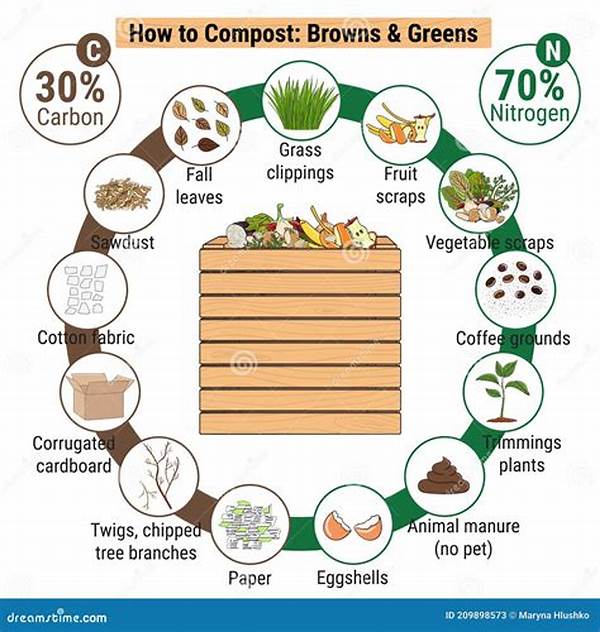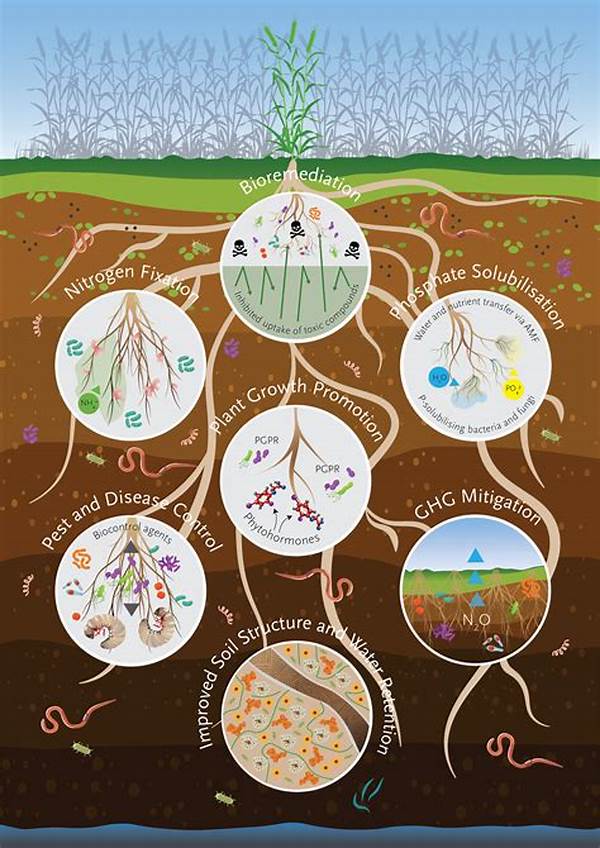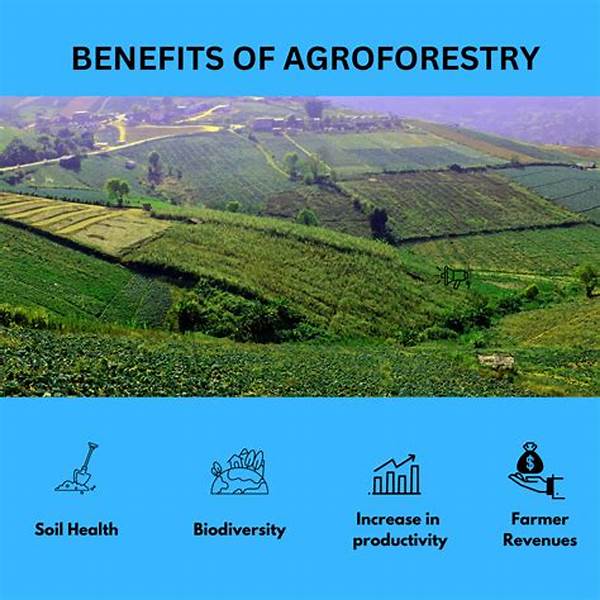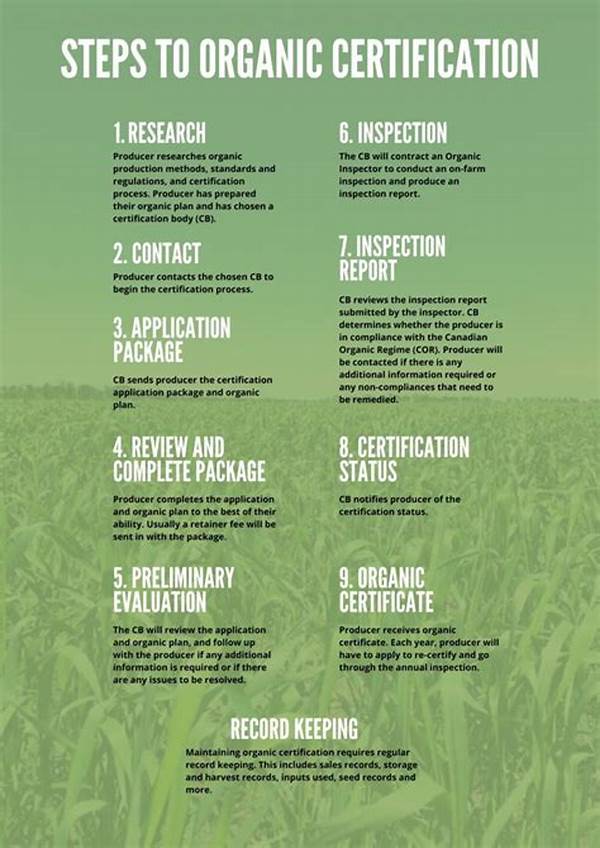In a world increasingly aware of environmental impacts, composting emerges as a beacon of hope, a simple yet effective way to reduce waste and enhance soil health. By understanding the types of green waste for composting, individuals can harness nature’s recycling system, transforming kitchen and garden refuse into nutrient-rich compost. This green initiative not only reduces landfill waste but also revitalizes garden ecosystems, urging everyone to dig deeper into sustainable living practices. The power lies in your hands to make a difference—starting with the waste you discard.
Read Now : Cover Crops For Weed Management
The Importance of Understanding Green Waste
Investing time to comprehend the types of green waste for composting is more than a sustainable act; it’s a transformative journey with tangible benefits. Each discarded leaf, fruit peel, or grass clipping holds the promise of rich compost material, provided it’s used wisely. As landfills overflow, the appeal of turning waste into wealth grows ever more compelling. By learning about these green waste types, you’re not just participating in an eco-friendly practice; you’re championing a cause that benefits both people and the planet. This knowledge empowers you to make informed choices, reinforcing the cycle of life in your very own backyard. Allowing nature to reclaim its waste is not an act of environmental altruism but a necessity, one that future generations will thank you for. The embrace of green composting is nothing less than a revolution—a movement where every piece of organic material contributes to a world less burdened by waste.
Key Types of Green Waste for Composting
1. Fruit and Vegetable Scraps: These represent some of the most common types of green waste for composting, providing necessary moisture and nutrients that accelerate the breakdown process.
2. Grass Clippings: Freshly cut grass is a fantastic nitrogen source, one of the crucial elements in composting that enriches the soil and speeds decomposition.
3. Coffee Grounds and Tea Leaves: These everyday waste items add vital nitrogen and acidity, key components in creating an ideal environment for microbial activity.
4. Plant Trimmings: Offcuts from pruning and gardening provide essential texture and structure, enhancing airflow and microbial access in the compost heap.
5. Young Weeds: As long as they’re not seeded, these can be a dynamic addition. They decompose rapidly, contributing vital nutrients back into the compost ecosystem.
How Green Waste Miracles Happen in Your Backyard
Imagine your backyard as a thriving system, a testament to natural processes working harmoniously. By integrating various types of green waste for composting, you’re crafting a miracle that sustains itself. Whether it’s leaves returning to the earth or kitchen scraps starting a new lifecycle, each element plays a crucial role. Composting is more than decay; it’s about renewal and balance, where fresh efforts yield beautiful results. The alchemy involves turning what seems useless into pure gold for your garden, proving the adage that one man’s trash is indeed another’s treasure. Witnessing this miracle unfold strengthens your bond with nature, aligning your lifestyle with the rhythm of the earth. Embrace composting to not just dispose of waste but invigorate it with purpose, envisioning a future where every green waste type has a role. An enriched garden is the reward for your diligent stewardship. As roots strengthen and plants flourish, a vivid victory unfolds against wastefulness.
Comprehensive Green Waste Guide for Enthusiasts
1. Leaf Litter: Ideal for layering, these help regulate the moisture content.
2. Herbivorous Pet Waste: Use cautiously but it offers robust nitrogen input.
3. Vegetable Peelings: High in moisture to balance the ‘dry’ content in compost.
4. Seaweed: Rich in minerals, accelerates the composting process.
Read Now : Soil Health And Fertility Improvement
5. Crushed Eggshells: Provide calcium but decompose slowly, so they should be ground.
6. Spices and Kitchen Herbs: Add small amounts to aid decomposition and enhance soil quality.
7. Twigs and Branches: When chopped, increase soil aeration extensively.
8. Paper Towels: Biodegradable if unbleached and free from chemicals.
9. Rotten Produce: Contributes rich nutrients but needs turning to prevent pests.
10. Straw and Hay: Offers carbon-rich elements for a balanced compost heap.
Crafting a Balanced Compost with Green Waste
Turning green waste into compost isn’t just about tossing scraps into a pile; it’s an art of balance and science. Each type of green waste for composting plays a unique part in achieving this balance. Organic waste, like fruit peels or plant trimmings, brings nitrogen into the mix, while items like straw or paper contribute carbon. Mastering the ratio of these elements is essential to creating a thriving compost heap. This balance avoids unpleasant odors and jump-starts the decomposing process with the help of beneficial microbes. These microbes feed on the mixture, breaking down waste into rich, fertilizing soil. Consistency is key in this sustainable craft; regular mixing and monitoring ensure the compost’s health, helping it reach its full potential. As a result, you produce not only a personal sense of accomplishment but also a tangible enhancement to your garden. This process champions a sustainable lifestyle and highlights the indispensable role of understanding types of green waste for composting.
Overcoming Composting Myths and Embracing Sustainability
Composting often battles myths about being messy or cumbersome, deceiving many away from reaping its benefits. Dismantling these misconceptions uncovers the truth about the types of green waste for composting: it’s remarkably straightforward. Excess mythic concerns about pests, inefficacy, or time constraints overshadow the simplicity of turning waste into value. With minimal effort, anyone can convert kitchen and garden waste into beneficial compost. Embracing composting requires little more than an understanding of what not to include, such as meats or oils that skew the decomposition process. Remember, the wisdom lies not in perfection but in participation—the journey of making a conscious choice to reduce waste and enrich your environment. As you take on this rewarding challenge, you’re not just combating waste; you’re promoting its transformation, sowing seeds of sustainability that flourish across generations. Invite yourself into this movement and discover a world where waste is simply another form of life’s nutrients in waiting.
Celebrating the Benefits of Green Waste Composting
Embracing the types of green waste for composting is a path to numerous rewards, extending beyond environmentally conscious living. For your garden, the benefits manifest in soil fertility, moisture retention, and disease resistance. Composting reduces carbon emissions associated with landfill waste, offering a personal contribution to combating climate change. Beyond environmental effects, the practice stirs a sense of community, encouraging shared experiences and knowledge exchanges. Gardens become not only personal sanctuaries but also educational grounds for future generations to learn sustainability principles. Through composting, you’re joining a legacy of caretakers preserving the earth’s vitality. In recognizing this, the simple act of waste recycling morphs into a rally cry for greener habits—advocating our shared Earth deserves care and stewardship. The task is yours to cherish, a tradition of mindful waste transformation that nourishes minds, bodies, and the grounds we flourish upon.



